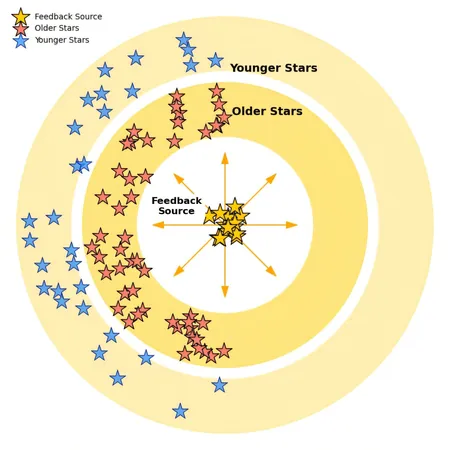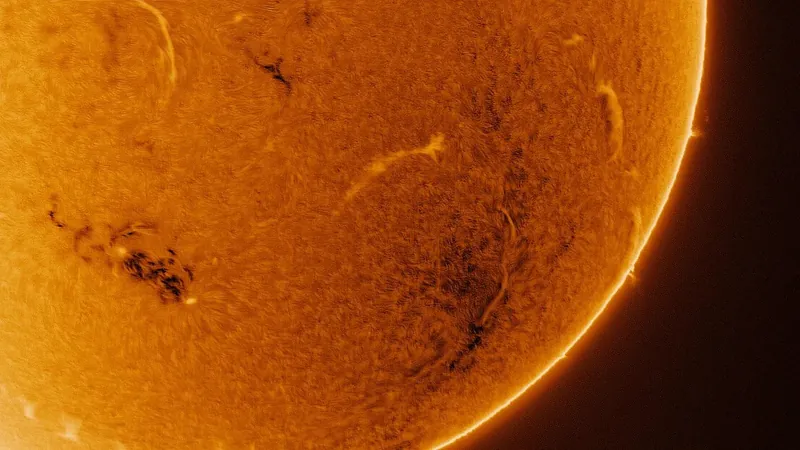
Stellar Secrets: New Discoveries About Star Clusters in Our Milky Way!
2025-05-30
Author: Yu
A Groundbreaking Discovery in Our Galaxy
Astronomers have struck gold with a new study published in Astronomy & Astrophysics, revealing four previously unknown primordial open cluster (OC) groups lurking in the depths of the Milky Way.
What Are Open Clusters?
Open clusters are groups of stars that are born from the same giant molecular cloud (GMC) and are usually found floating in isolation throughout the galaxy. However, this latest discovery shakes that theory to its core!
A Chain Reaction of Star Births!
The identified OC groups don’t just form in isolation – they are actually made up of multiple member clusters that share a common birthplace. What's truly fascinating is that two of these clusters, dubbed G1 and G2, seem to have formed through a cascade of star formation triggered by a series of supernova explosions.
High-Tech Sleuthing!
Leveraging the high-precision data gathered by the Gaia satellite, a team from the Xinjiang Astronomical Observatory (XAO) and its collaborating partners – including the Shanghai Astronomical Observatory, Yunnan Observatories, and the University of Heidelberg – meticulously analyzed the 3D positions, velocities, and ages of these celestial formations. The distinct ring-like and arc-like shapes of G1 and G2 hint at transformative external forces acting on them.
Mapping the Cosmic Age!
Using a triggered star formation model, researchers created spatial correlation maps that reveal stunning relationships between cluster age and their distance from potential supernova sites around the locations where these OCs emerged. The findings unveil a remarkable age-distance correlation, suggesting an explosive cosmic dance where multiple supernovae unleashed a flurry of star formation in the G1 and G2 clusters.
Evidence from Pulsars!
To cement this groundbreaking hypothesis, the team conducted trajectory traceback analyses on 607 pulsars, remnants of the explosive supernova events. Many of these pulsars were found to have birthplaces that align perfectly with the predicted explosion regions, providing compelling evidence that supports a dynamic feedback-driven and hierarchical formation of these open cluster groups.
The Cosmic Story Continues!
This remarkable discovery not only enriches our understanding of the star formation process but also highlights the interconnectedness of stellar life in our galaxy. As we continue to explore our cosmic neighborhood, who knows what other stellar secrets await us?




 Brasil (PT)
Brasil (PT)
 Canada (EN)
Canada (EN)
 Chile (ES)
Chile (ES)
 Česko (CS)
Česko (CS)
 대한민국 (KO)
대한민국 (KO)
 España (ES)
España (ES)
 France (FR)
France (FR)
 Hong Kong (EN)
Hong Kong (EN)
 Italia (IT)
Italia (IT)
 日本 (JA)
日本 (JA)
 Magyarország (HU)
Magyarország (HU)
 Norge (NO)
Norge (NO)
 Polska (PL)
Polska (PL)
 Schweiz (DE)
Schweiz (DE)
 Singapore (EN)
Singapore (EN)
 Sverige (SV)
Sverige (SV)
 Suomi (FI)
Suomi (FI)
 Türkiye (TR)
Türkiye (TR)
 الإمارات العربية المتحدة (AR)
الإمارات العربية المتحدة (AR)